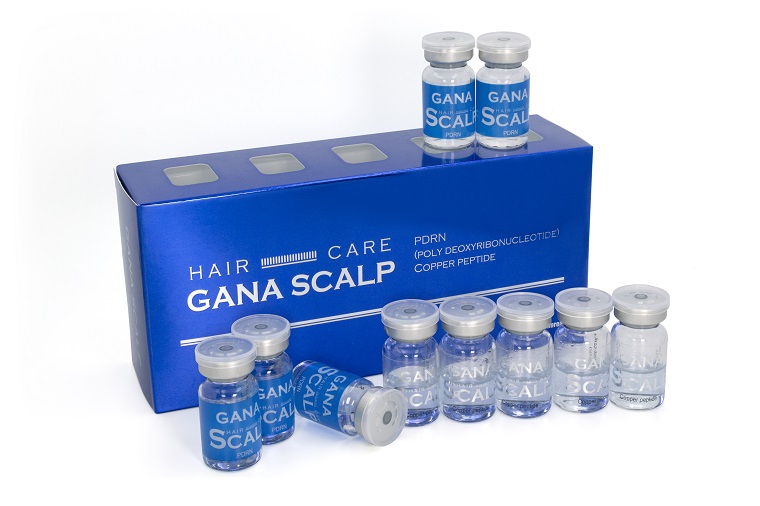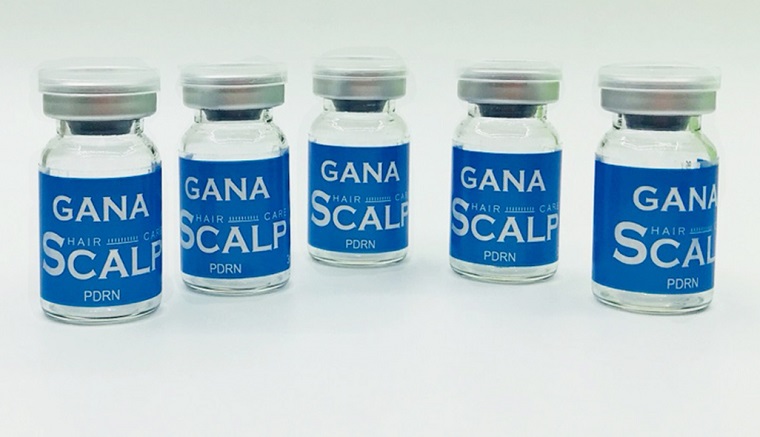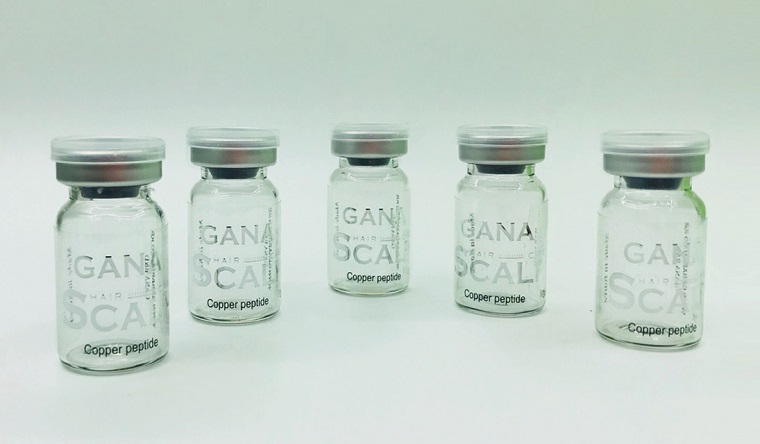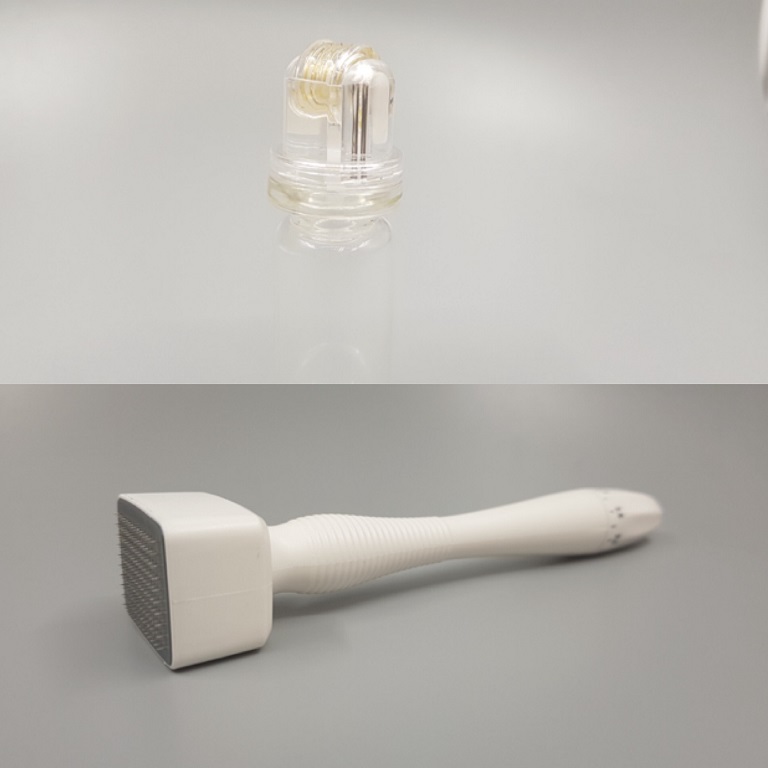3ml prefilled vials x 10EA
-use for hair growth
PDRN X 5 vials
GHK_CU X 5 vials
Caution
-Do no use for other use
-Do not use on the face and neck
Ingredients
-PDRN
(poly deoxyribonucleotide)
-Copper peptide
Effect of GANA SCALP
1 .scar healing by Copper peptide
2. hair growth by copper peptide
3. cell regeneration by PDRN and copper peptide
4. Blood vessel regrowth by PDRN and copper peptide
What
is copper peptide
Copper peptide GHK-Cu is a naturally occurring copper complex
of a glycyl-L-histidyl-L-lysine peptide.
Since it has three amino acids it is called tripeptide.
The GHK-Cu tripeptide has strong affinity for copper(II)
and was first isolated from human plasma.
It can be found also in saliva and urine.
Copper peptides are naturally occurring small protein fragments
that have high affinity to copper ions.
In human plasma, the level of GHK-Cu is about 200 µg/ml at age 20.
By the age of 60, the level drops to 80 µg/ml.
In humans, tripeptide GHK-Cu can promote activation of wound healing,
attraction of immune cells, antioxidant and anti-inflammatory effects,
stimulation of collagen and glycosaminoglycan synthesis in skin fibroblasts
and promotion of blood vessels growth.
Recent studies revealed its ability to modulate expression of a large number of human genes,
generally reversing gene expression to a healthier state.
Synthetic GHK-Cu is used in cosmetics as a reparative and anti-aging ingredient
Cosmetic use
Facial studies
Copper peptide GHK-Cu is widely used in anti-aging cosmetics (INCI name: Copper tripeptide-1).
Several controlled facial studies confirmed anti-aging, firming and anti-wrinkle activity of copper peptide GHK-Cu.
Abdulghani et al. established that facial cream containing GHK-Cu increased collagen in photoaged skin of 20 female volunteers, performing better than vitamin C and retinoic acid.
Leyden et al. conducted a 12-week facial study of GHK-Cu containing face and eye cream, reporting significant improvement of skin laxity, clarity and appearance, reduced fine lines and the depths of wrinkles and increased skin density and thickness comparing to placebo.
GHK-Cu eye cream performed better than vitamin K cream.
Finkley et al. conducted 12 week facial study on 67 women and reported that GHK-Cu cream applied twice daily improved aged skin appearance, increased thickness, reduced wrinkles and strongly stimulated dermal keratinocyte proliferation as determined by histological analysis of biopsies. The same study found copper peptide GHK-Cu to be non-toxic and non-irritating.
Hair growth
Copper peptide GHK-Cu and its analogues were found to stimulate hair growth. In some circumstances, the efficiency of synthetic analog of GHK-Cu was similar to that of 5% minoxidil.
A commercial product GraftCyte was clinically proven to improve hair transplantation outcome.
Shown to promote collagen production, using copper peptides topically on the scalp will help strengthen already existing hair, while stimulating growth in areas that are lacking thickness.
Hair growth
Copper peptide GHK-Cu and its analogues were found to stimulate hair growth. In some circumstances, the efficiency of synthetic analog of GHK-Cu was similar to that of 5% minoxidil. A commercial product GraftCyte was clinically proven to improve hair transplantation outcome.
Shown to promote collagen production, using copper peptides topically on the scalp will help strengthen already existing hair, while stimulating growth in areas that are lacking thickness
What Is PDRN?
Polydeoxyribonucleotide is derived from sperm trout through an extraction process.
The compounds are able to stimulate Vascular Endothelial Growth Factors
and certain receptors in the body that trigger the creation of new artery formation,
improves blood flow, and reduces inflammation. Most importantly,
PDRN provides the nucleotides necessary for cell regeneration.
In addition to its use for diabetic foot ulcers, PDRN has proven effective in treating PAOD,
chronic wounds, hind limb ischemia, osteoarthritis disease, coronary artery disease, and burn injuries
How to use
1.use with derma roller
2.Interval 2wks
3.PDRN X 5 vials
GHK_CU X 5 vials
Apply each vials in turn
biweekly
3.Total 10 sessions





